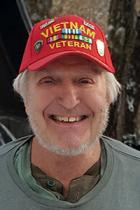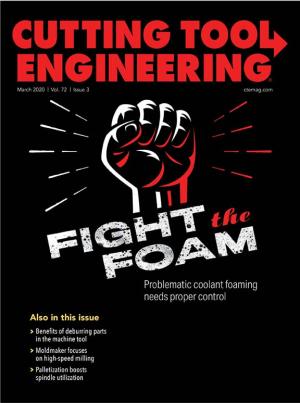The introduction of CNC machine tools changed the machine shop world. Productivity is way up, and shops can produce parts and part features that were out of the question in the past. But unlike most machine operators, if you tell a CNC machine to kill itself, it will. So in programming language, G0Z-0.500 is good for a move, but G0Z-5.00 can break something. To paraphrase Benjamin Franklin, breakage prevented is money earned, so let’s use low-cost methods to raise the bottom line.
Here, I’ll discuss how to prevent crashes on a three-axis CNC milling machine. This could be a Bridgeport-type machine, a lathe, a bed mill or a machining center.
The first step in solving a problem is to define it. A crash is when a cutting tool contacts a solid object while a machine does a rapid move (G0 in G code). For the three-axis milling machine we’re using, the G code is generated with or without the aid of a CAM program, and there is no simulation software available to debug the code.
Good shop practices deliver code that will run safely and produce correct parts. The procedure involves using a machine tool to verify the part program. This starts with programming. A shop should have a standard procedure for determining the z-axis zero position with regard to the workpiece and a standard positive z dimension for a clearance plane.
Rapid (G0) moves in the x, y plane should be done at the clearance plane or above it. When clamping a part with a vise, set the z zero at or above the vise jaws. Confusion can lead to trouble, and having standard procedures reduces confusion. If a workholder protrudes above the z zero, it needs to be documented for the machine operator. Double-check absolute (G90) and incremental (G91) position commands, as well as the z positions.
A copy of the part print is made that defines the x, y and z zero locations, the block number of rapid moves and the x, y position of the downward rapid z moves. Give this information to the operator.
The machine then is set up for the job, and the program is loaded. The tool length offset is set short so the cutting tool will not touch anything. Alternately, a toolholder with no cutting tool can be used. On a machine with an automatic toolchanger, one tool position can contain a toolholder with no cutting tool to be used for debugging.
The feed rate is set well below the speed of the rapid moves. This setting makes it obvious to the operator whether the machine control is in rapid or feed. These are modal commands that stay in effect until superseded. Say the machine is in rapid in block N100 and is supposed to go into feed rate in block N101, but G1 is not programmed in block N101. As a result, the tool will rapid into the workpiece. The operator needs to catch this.
The program is run one block at a time.
At rapid moves, the operator observes the z positions and documents any problems with the block number and the x, y position.
Rapid moves inside a workpiece cavity require special care.
While debugging, the operator can check geometry. For example, if the program drills a bunch of holes, it’s easy to see if they are in the right locations.
Related Glossary Terms
- automatic toolchanger
automatic toolchanger
Mechanism typically included in a machining center that, on the appropriate command, removes one cutting tool from the spindle nose and replaces it with another. The changer restores the used tool to the magazine and selects and withdraws the next desired tool from the storage magazine. The changer is controlled by a set of prerecorded/predetermined instructions associated with the part(s) to be produced.
- clearance
clearance
Space provided behind a tool’s land or relief to prevent rubbing and subsequent premature deterioration of the tool. See land; relief.
- computer numerical control ( CNC)
computer numerical control ( CNC)
Microprocessor-based controller dedicated to a machine tool that permits the creation or modification of parts. Programmed numerical control activates the machine’s servos and spindle drives and controls the various machining operations. See DNC, direct numerical control; NC, numerical control.
- computer-aided manufacturing ( CAM)
computer-aided manufacturing ( CAM)
Use of computers to control machining and manufacturing processes.
- feed
feed
Rate of change of position of the tool as a whole, relative to the workpiece while cutting.
- gang cutting ( milling)
gang cutting ( milling)
Machining with several cutters mounted on a single arbor, generally for simultaneous cutting.
- lathe
lathe
Turning machine capable of sawing, milling, grinding, gear-cutting, drilling, reaming, boring, threading, facing, chamfering, grooving, knurling, spinning, parting, necking, taper-cutting, and cam- and eccentric-cutting, as well as step- and straight-turning. Comes in a variety of forms, ranging from manual to semiautomatic to fully automatic, with major types being engine lathes, turning and contouring lathes, turret lathes and numerical-control lathes. The engine lathe consists of a headstock and spindle, tailstock, bed, carriage (complete with apron) and cross slides. Features include gear- (speed) and feed-selector levers, toolpost, compound rest, lead screw and reversing lead screw, threading dial and rapid-traverse lever. Special lathe types include through-the-spindle, camshaft and crankshaft, brake drum and rotor, spinning and gun-barrel machines. Toolroom and bench lathes are used for precision work; the former for tool-and-die work and similar tasks, the latter for small workpieces (instruments, watches), normally without a power feed. Models are typically designated according to their “swing,” or the largest-diameter workpiece that can be rotated; bed length, or the distance between centers; and horsepower generated. See turning machine.
- machining center
machining center
CNC machine tool capable of drilling, reaming, tapping, milling and boring. Normally comes with an automatic toolchanger. See automatic toolchanger.
- milling
milling
Machining operation in which metal or other material is removed by applying power to a rotating cutter. In vertical milling, the cutting tool is mounted vertically on the spindle. In horizontal milling, the cutting tool is mounted horizontally, either directly on the spindle or on an arbor. Horizontal milling is further broken down into conventional milling, where the cutter rotates opposite the direction of feed, or “up” into the workpiece; and climb milling, where the cutter rotates in the direction of feed, or “down” into the workpiece. Milling operations include plane or surface milling, endmilling, facemilling, angle milling, form milling and profiling.
- milling machine ( mill)
milling machine ( mill)
Runs endmills and arbor-mounted milling cutters. Features include a head with a spindle that drives the cutters; a column, knee and table that provide motion in the three Cartesian axes; and a base that supports the components and houses the cutting-fluid pump and reservoir. The work is mounted on the table and fed into the rotating cutter or endmill to accomplish the milling steps; vertical milling machines also feed endmills into the work by means of a spindle-mounted quill. Models range from small manual machines to big bed-type and duplex mills. All take one of three basic forms: vertical, horizontal or convertible horizontal/vertical. Vertical machines may be knee-type (the table is mounted on a knee that can be elevated) or bed-type (the table is securely supported and only moves horizontally). In general, horizontal machines are bigger and more powerful, while vertical machines are lighter but more versatile and easier to set up and operate.
- milling machine ( mill)2
milling machine ( mill)
Runs endmills and arbor-mounted milling cutters. Features include a head with a spindle that drives the cutters; a column, knee and table that provide motion in the three Cartesian axes; and a base that supports the components and houses the cutting-fluid pump and reservoir. The work is mounted on the table and fed into the rotating cutter or endmill to accomplish the milling steps; vertical milling machines also feed endmills into the work by means of a spindle-mounted quill. Models range from small manual machines to big bed-type and duplex mills. All take one of three basic forms: vertical, horizontal or convertible horizontal/vertical. Vertical machines may be knee-type (the table is mounted on a knee that can be elevated) or bed-type (the table is securely supported and only moves horizontally). In general, horizontal machines are bigger and more powerful, while vertical machines are lighter but more versatile and easier to set up and operate.
- toolchanger
toolchanger
Carriage or drum attached to a machining center that holds tools until needed; when a tool is needed, the toolchanger inserts the tool into the machine spindle. See automatic toolchanger.
- toolholder
toolholder
Secures a cutting tool during a machining operation. Basic types include block, cartridge, chuck, collet, fixed, modular, quick-change and rotating.


